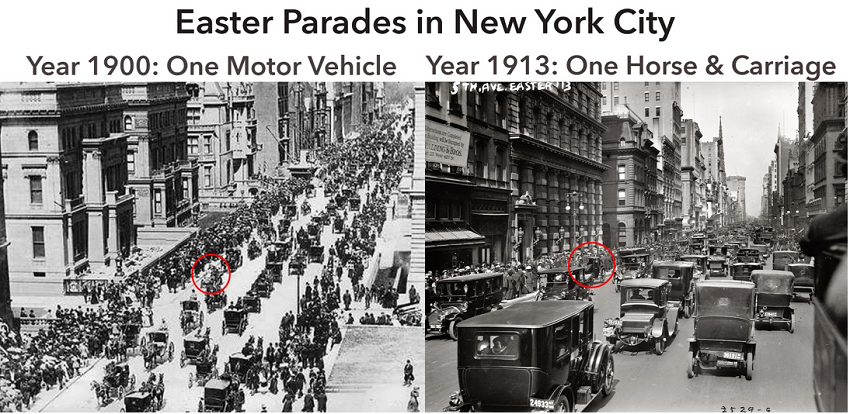What are the takeaway lessons here regarding how edge analytics controllers will disrupt the current building industry?
 Therese
Sullivan,
Therese
Sullivan,Principal,
|
August 2017 |
[an error occurred while processing this directive] |
| Your Buildings’ 21st Century Edge What are the takeaway lessons here regarding how edge analytics controllers will disrupt the current building industry? |
 Therese
Sullivan, Therese
Sullivan,Principal, |
| Articles |
| Interviews |
| Releases |
| New Products |
| Reviews |
| [an error occurred while processing this directive] |
| Editorial |
| Events |
| Sponsors |
| Site Search |
| Newsletters |
| [an error occurred while processing this directive] |
| Archives |
| Past Issues |
| Home |
| Editors |
| eDucation |
| [an error occurred while processing this directive] |
| Training |
| Links |
| Software |
| Subscribe |
| [an error occurred while processing this directive] |
One way to gain perspective on disruptive technologies is to look backward to see forward. Tony Seba, an instructor in Entrepreneurship, Disruption and Clean Energy at Stanford’s Continuing Studies Program, does this with these early 20th-Century Easter Parade images. The images suggest that the vehicle market went from almost all horse-driven to almost all motor-driven in just 13 years. They support Seba’s position that today’s car industry could see a near total change over from internal-combustion-engines to electric vehicles in just a few years, not decades.

The images are a dramatic statement about innovation in cars. But, what do they say about buildings? Not much. The bricks and mortar constructions look about the same. Nevertheless, inside some of those Manhattan buildings, there were architecture firms innovating at a pace too. Architects were sizing up the new elevator and escalator technology as well as the electric motors to drive them, just beginning to envision the new taller structures that would change the skyline. Disruption in the way we design, construct and operate buildings may never be as visible or thrilling as what is happening in cars; but, the two industries are inextricably linked. Looking at what is happening in edge control and analytics in cars is a good way to understand how comparable technology will bring buildings into line with 21st Century service demands.
We
see, for example, that new edge
controllers – those that support the full software stack needed to
collect, store and run analytics on time-series data from a building’s
many digitized sources – are going to be a powerful force in building
automation. They have sufficient compute and storage resources packed
into a footprint not much bigger or more expensive than a mobile phone.
They are of interest to stakeholders from specifying engineers to
controls contractors to occupants that want to pull building
performance data from wherever it exists and push it to wherever it can
help them make better decisions and be more productive. But, do we see
the size or speed of the disruption they are bringing?
Just as Tony Seba looks backward to see forward, there is a lot to be
learned by looking sidewise at the Connected
Car to see what is on the horizon for the Connected Building. Most software-is-eating-the-car
discussions start with the On-Board Diagnostics specification, OBD-II.
OBD-II specifies the standard hardware connector to vehicle computers
as well as the protocol for communicating standardized diagnostic
trouble codes. Car makers around the world have been evolving and
supporting this specification for expressing car performance
information since the first version was introduced in the early 1980s.
While it is not an Application Programming Interface (API) per se, it
is stable and detailed enough for software developers to use like an
API.
A prime example of a car edge device that leverages OBD-II is the mobile diagnostics
adapter from Automatic Labs.
Unlike previous PC-based and hand-held OBD-II readers, which were
targeted for use at car repair shops by certified car mechanics, the
Automatic adapter and competitors like Verizon Hum are marketed
directly to car-owning consumers. Their developers recognized that car
owners would use car data in ways never considered by car mechanics.
So, they launched their edge devices along with mileage-tracking apps
that interfaced to the type of cloud accounting services used by small
businesses, gig workers and entrepreneurs. And, they mashed in Google
Maps and other web mapping services to create trip tracking apps
attractive to more business users and parents of teen-drivers. To
further popularize the
device category, they worked to build a community of 3rd-party app
developers around their car diagnostics adapters through an app store
modeled on Apple iTunes and Google Play e-commerce sites.
The ecosystem contributed a host of new online services targeted to car
owners that involve mobile shopping, home-automation management, even
fitness—and yes—newer, better ways to work with car repair shops and
related services.
It all seems to be working well for Automatic Labs. It was just purchased by SiriusXM.
Verizon, SiriusXM, these are not traditional car companies. They are
data companies carving out their share of the growing Connected Car
market. They have a powerful market position in that the data they are
collecting and analyzing is valuable machine-learning training data for
the coming era of autonomous cars.
What are the takeaway lessons here regarding how edge analytics
controllers will disrupt the current building industry? First, there is
the necessity of an open specification that is sufficiently detailed
and supported to serve as an API for software developers. What is the
BAS-industry equivalent of OBD-II? BACnet protocol mainly addresses
communications and syntactical interoperability. Project Haystack, on
the other hand, focuses on semantic interoperability and is more
suitable for application development inside and outside the traditional
buildings industries. Then, in the BAS world, you need BMS software to
express the architecture of the target hardware and functional logic of
the controller. The open-source Sedona BMS framework used in
combination with open-source Haystack modeling is as close to an OBD-II
equivalent as the BAS industry has right now.
Next, just as the target market for Connected-Car
adapters is much larger than the car mechanic shops that previously
used OBD readers, Connected-Building
edge analytics controllers will not just be used by controls
contractors. A primary category of user will be building optimization
professionals. Building optimization is a growing field with systems
engineers, commissioning advisors, energy managers as well as master
systems integrators merging into it. These professionals are
distinguished by their ability bring together time-series data
streaming in high-volume from equipment and sensor systems of many
brands and glean valuable insight from it. In a recent interview on the videocast ControlTalk Now,
one leading engineer with such credentials, Matt Schwartz
of Altura Associates, describes the work this way:
The
point being made here is analogous to the recognition by Automatic Labs
and Verizon Hum OBD-II innovators that the car performance data in the
hands of end-users would be used in ways far beyond car
maintenance.
Matt Schwartz and others at Altura Associates are early users of edge
analytics controllers. During the interview, he describes deploying
about a dozen to pull pressure and flow readings at strategic locations
from a massive centralized compressed air system that serves a large
university campus:
One final point of comparison between Connected Building edge analytics controllers and Connected Car diagnostic adapters concerns the flexible nature of 21st-century work. The buzz about Automatic Labs car plug-in first gained momentum among entrepreneurs and small business people who needed to keep track of their mileage for expense reporting. With office-sharing startup WeWork reporting amazing worldwide growth and an astronomical market valuation in the 10s of $billions, it seems like the market expects a good portion of the office buildings along the Manhattan Easter Parade route and in city centers everywhere to be flexible workspace soon. It follows that core building services like power, heating/cooling, ventilation, lighting, and security will need to be tracked and expensed like car mileage when this happens. This trend alone will fuel demand for edge analytics controllers and the building performance data that they make accessible.
For more information contact
Alper at alper@ankalabs.com
[an error occurred while processing this directive]
[Click Banner To Learn More]
[Home Page] [The Automator] [About] [Subscribe ] [Contact Us]